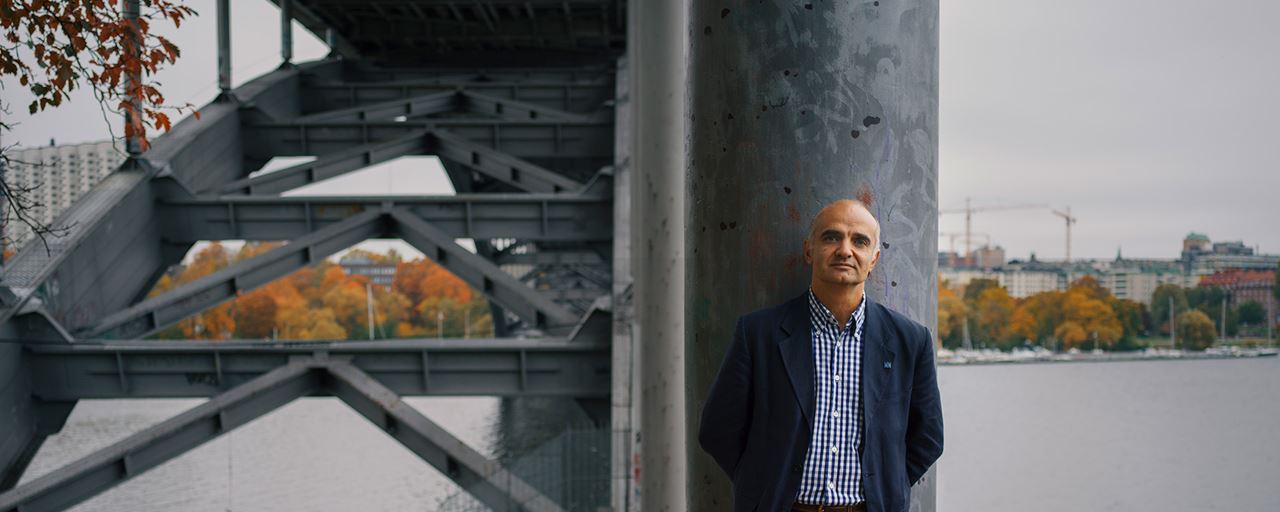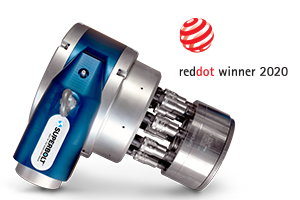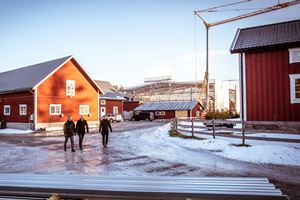
“Instrumented bolts would be really interesting for the industry”
If you have a bridge in need of a check-up, Professor Raid Karoumi is the doctor to call. A renowned expert in the field, Karoumi has developed numerous methods for structural health monitoring and vibration analysis of bridges. He is now conducting cutting-edge research using sensors and artificial intelligence to prepare bridges for the challenges of the future.
How do bolted joints affect bridge durability, safety and maintenance?
In my opinion, bolted joints are preferred over welded joints. When you weld, you always end up with defects and stress concentrations, which make these connections very critical for fatigue. Bolted joints also allow some movement, which gives a lot more energy dissipation and thus higher damping. Installing and connecting prefabricated parts is much easier with bolted joints too, especially in Nordic winters when it is often too cold to weld.
What are the main bolted joint challenges, and how are these solved today?
Loosening due to vibration, fatigue and corrosion are the primary challenges, which are of course solved by tightening, maintenance, and treating. Something that could be really interesting for the industry to solve these issues in the future would be instrumented bolts. Smart sensors could tell us what is happening to the bolt in real time and let us know when it has reached its lifetime or if it needs tightening.
What does vibration mean for bridges and what challenges does it present?
Vibration can be bad, not only for passenger and pedestrian comfort, but also for safety. High vibration levels on a railway bridge, for example, reduces track stability and could cause a train to derail. Bridges suffering from a high level of vibration also require more maintenance, repair and retrofitting.
Any interesting projects underway?
We’ve developed a wireless smart monitoring system to train an artificial neural network to recognize healthy bridge conditions. In the future, the network will compare new measurements with this old data, allowing us to detect changes and deterioration much earlier than just by looking at the signals or the structure.
Any other exciting innovations in the pipeline?
For a railway bridge project we’re working on right now, we’ve installed a device that harvests vibration from the track and converts it into energy, which is then used to recharge the batteries of the monitoring system. Because the system takes energy from the vibration, it also works as a damper to reduce it on the bridge. We hope to be able to use this harvested energy for other exciting future innovations as well — for example to heat the pavement of a road bridge to reduce skidding accidents.
Raid Karoumi demonstrates one of the smart sensors:

Name: Raid Karoumi
Title: PhD, Professor of Bridge Engineering and Head of Department, Structural Engineering and Bridges, KTH Royal Institute of Technology, Stockholm
Age: 54
Education: MSc in Engineering from KTH Royal Institute of Technology in Stockholm, PhD in Structural Engineering and Bridges from KTH Royal Institute of Technology in Stockholm
Professional Background: Design consultant for buildings and bridges
Passion: Cars, especially sports cars



















